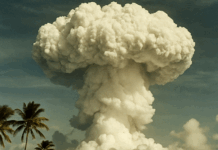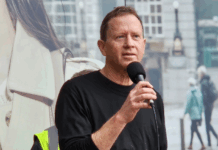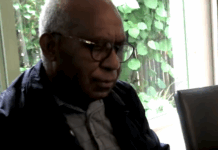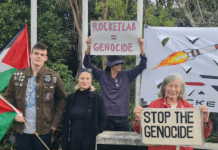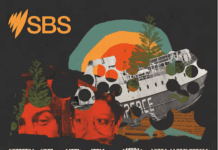ANALYSIS: By Wadan Narsey in Suva
The opinion polls about voting intentions for Fiji’s 2022 General Election suggests that voters face the horrible challenge of choosing as their next Prime Minister one of two former military officers.
Both of these former soldiers have carried out military coups removing lawfully elected governments.
Is Fiji genuinely between, as the saying goes, “a rock and a hard place”? I suggest that today’s young voters, who have only known the 14 years of governance by the Voreqe Bainimarama government, need to think also about how Sitiveni Rabuka governed Fiji after his 1987 coup.
Both coup leaders may have coup skeletons in their cupboards.
But only one is being very selectively focused on by the current Republic of Fiji Military Force (RFMF) commander, writing (appropriately) in the other daily newspaper, Fiji Sun.
Fiji’s voters ought to focus on historical facts by answering the following difficult questions about the two coup leaders:
- Who were really behind the coups of 1987, 2000 and 2006?
- How did each coup leader change Fiji’s constitution and Fiji’s governance?
- How did each coup leader change the powerful institutions of state, such as police, prisons and judiciary?
- How did each coup leader influence the media?
- Were our coup leaders collective decision-makers or dictators?
- Were the coup leaders accountable to the voters or to “powers behind the throne”?
Perhaps Fiji is more accurately “between a rock and a softer place” with political and economic progress only possible if there is a change in government.
Behind the 1987 coup?
The world knows that Sitiveni Rabuka, the third in command in the RFMF, implemented the first 1987 coup.
But anyone watching the very public protests against the 1987 NFP/FLP government would have known that the former Prime Minister (the late Ratu Sir Kamisese Mara) and the Governor-General and later President (the late Ratu Sir Penaia Ganilau), and all their entourages, would have had their ears very close to the ground and, possibly, their fingers in the pie.
But importantly, what did Rabuka do afterwards as coup leader?
Rabuka became multiracial
Victor Lal and Fijileaks rightly remind readers about the trauma that Rabuka’s 1987 coup caused the Indo-Fiji community.
But what needs also to be discussed is Rabuka’s reform of the racist 1990 Constitution and his support of the revolutionary 1997 Constitution.
Rabuka, in partnership with Jai Ram Reddy (Leader of the National Federation Party) agreed to the appointment of the three-person Reeves Constitution Commission (Sir Paul Reeves, Tomasi Vakatora Snr and Dr Brij Lal).
Their report was the basis of the 1997 Constitution, with one valuable addition not in the report.
It is sadly often forgotten today that the 1997 Constitution included a “multiparty government” provision.
This ensured that any party with at least 10 percent of the seats in Parliament had to be invited to join the cabinet and share in the governance of Fiji.
Of course, there was one huge defect in its electoral system, which I had explained even as I (as a NFP Member of Parliament then) voted to pass the 1997 Constitution. (“The Constitution Review Commission Report: sound principles but weak advice on electoral system”, The Fiji Times, November 1, 1996).
But we in the NFP were in a hurry to approve the progressive constitutional change agreed to by Rabuka.
We knew he had to convince some very reluctant colleagues, and we fully co-operated for the 1999 Elections.
I remember accompanying Ratu Inoke Kubuabola in his election campaigns in the Yasawas and Ratu Sakiusa Makutu in Nadroga.
Sadly, both Indo-Fijian and indigenous Fijian voters rejected the multiracial stance of Rabuka and Reddy.
Nevertheless, it is to Rabuka’s credit that he accepted the results of the election and humbly offered his services to Mahendra Chaudhry as the incoming PM (on the phone in my presence on the Vatuwaqa Golf Course).
Unfortunately, for reasons that historians can explore till the cows come home, Chaudhry did not accept that humble offer from Rabuka, who soon after lost the leadership of SVT to Ratu Inoke Kubuabola.
Ignored today are the following:
- the historical opportunity to implement a multiracial multiparty government (of the Fiji Labour Party and Mr Rabuka’s Soqosoqo Vakavulewa ni Taukei (SVT) party went begging. Thus the cogs of the 2000 coup were set in motion;
- the 1997 Constitution had an upper house — the Senate which was a solid “checks and balances” mechanism of national leaders, and which could officially hold the decisions of the elected House of Representatives to account; and
- by and large the institutions of government were relatively independent of the government of the day. Less clear are the events of 2000.
Behind the 2000 coup?
It is a real tragedy that while George Speight is seen as the leader of the 2000 coup, the truth has never been revealed about who else, including military officers, might have had more than just a sticky hand in it.
It is a real tragedy that Fiji has forgotten the names of a few honest RFMF officers who were very ethically opposed to the 2000 coup. From personal communications to me, I list the following: Ilaisa Kacisolomone, George Kadavulevu, Vilame Seruvakoula, Akuila Buadromo and several others.
But also conveniently forgotten are the names of RFMF officers who were at least initially behind the 2000 coup, many revealed by the Evans Board of Inquiry Report (which can be freely downloaded from the TruthForFiji website).
What is historically indisputable is that after RFMF gained control of the situation Bainimarama chose not to restore the lawful Chaudhry government to power but appointed the interim Qarase government, thereby effecting the real coup.
It is said that some of the CRW soldiers involved in the November 2000 mutiny did so because they felt betrayed by some in the RFMF hierarchy.
It is not disputed that a number of CRW soldiers (not necessarily involved in the mutiny) ended up dead after the mutiny in circumstances not known to this day.
It is not in dispute that Rabuka, with his uniform, appeared at Queen Elizabeth Barracks at the time of the mutiny.
But while one newspaper is focusing on his actions, the roles of several other senior RFMF officers during the 2000 coup are not being similarly examined.
2006 and governance since then
Now we come to the 2006 coup.
In contrast to those which went before, there is no doubt whatsoever that the then RFMF commander, Voreqe Bainimarama, was the sole leader of the 2006 coup and totally controlled the government thereafter, while still controlling the RFMF.
Given what have I sketched above, the sheer contrasts of the Bainimarama coup with the Rabuka coup are all too obvious.
It is tragically forgotten that the 2006 coup did not just depose Qarase’s SDL government.
It deposed a multi-party government — a government of Qarase’s Soqosqo Duavata ni Lewenivanua (SDL) Party and FLP.
One can understand why Chaudhry as FLP leader has never emphasised that point.
Soon after the 2006 coup, he joined Bainimarama’s government as Minister of Finance.
It is indisputable that Bainimarama ruled Fiji for eight years as the head of a military government which was not democratically accountable to the Fiji public.
A “People’s Charter” exercise was carried out under the leadership of John Samy and the late Archbishop Mataca but rejected without explanation.
Professor Yash Ghai’s Constitutional Commission was appointed by Bainimarama and Attorney-General Aiyaz Sayed-Khaiyum.
It produced a comprehensive draft constitution, but Professor Ghai and his Commission were also were sent packing for reasons never clarified.
A 2013 Constitution with little popular input was imposed on Fiji without the approval of any elected Parliament.
The Senate was abolished.
Parliament has become a rubber stamp for the legislative changes the current government wants.
Many important institutions of government were allowed by the Constitution to come under the direct or indirect control of the politicians who controlled the government.
Large sections of the media (with the painful exception of The Fiji Times) and the Media Industry Development Authority came under government influence or control.
Undermining the Ministry of Information, a massive amount of money was spent annually on American propaganda machine Qorvis.
One government minister, not the Prime Minister, clearly became all powerful while others toed the line or were ejected from Parliament.
To fund the ruling party’s electioneering, the owners of some of Fiji’s largest businesses have worked their way around the annual political donation limit of $10,000 by using family members and even in some cases staff, contributing hundreds of thousands in cash.
A distorted electoral system
Under the 2013 Constitution an electoral system was imposed, supposedly proportional, but designed to elect a President type “leader” with the bulk of the votes, while the rest of his MPs and ministers had pitifully small numbers.
There was an outrageous ballot paper for one national constituency without names, faces, or party symbols, just one number among more than 200 from which Fiji’s largely undereducated voters were to select one number.
Voters were not allowed the help of even a “voter assistance card” (common in all democratic countries) which was astonishingly made illegal with heavy fines.
This utterly contrived electoral system was given the stamp of approval by many authoritative figures such as the Catholic cleric Reverend David Arms and even self-censoring USP academics whose academic journal covering the 2014 elections blazoned “ENDORSED” on their cover.
That system was perpetuated through the 2018 Elections and is now in full swing for the 2022 elections.
The outcome of those elections will be interesting to say the least, given that under the Constitution the RFMF can claim legal responsibility for safeguarding the welfare of Fiji, which may be what they decide themselves.
Between a rock and a softer place?
Of course, Fiji’s voters might also want to examine the impact of the two coup leaders on the public debt, FNPF and the economic welfare (and poverty) of ordinary people of Fiji.
But even the very simple comparisons and contrasts that I have drawn above between Rabuka and Bainimarama in their governance of Fiji, would suggest that Fiji is not between “the rock and a hard place” but “between a rock and a softer place”.
I am sure that The Fiji Times readers are intelligent enough to decide who is the “rock” and who is the “softer place” — regardless of the skeletons rattling in both their cupboards.
Professor Wadan Narsey is a former professor of economics at The University of the South Pacific and a leading Fiji economist and statistician. The views expressed in this article are not necessarily those of The Fiji Times. Republished with permission.


